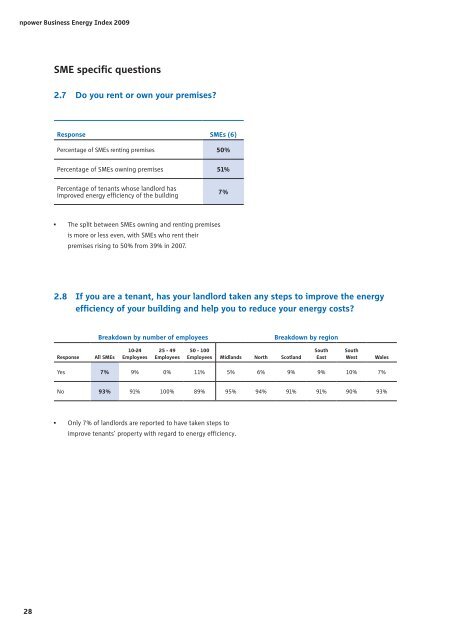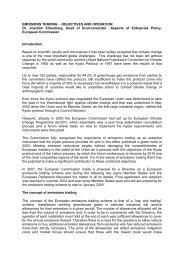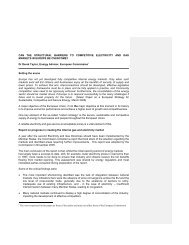Business Energy Users Survey - Winter 2008/09 - Moffatt Associates
Business Energy Users Survey - Winter 2008/09 - Moffatt Associates
Business Energy Users Survey - Winter 2008/09 - Moffatt Associates
You also want an ePaper? Increase the reach of your titles
YUMPU automatically turns print PDFs into web optimized ePapers that Google loves.
npower <strong>Business</strong> <strong>Energy</strong> Index 20<strong>09</strong>npower <strong>Business</strong> <strong>Energy</strong> Index 20<strong>09</strong>SME specific questions2.7 Do you rent or own your premises?2.9 Which of the following “Quick-Win” efficiency measures wouldgive the biggest paybackResponse High Low Don’t knowResponse SMEs (6)Percentage of SMEs renting premises 50%Percentage of SMEs owning premises 51%Monitoring consumption more regularly 29% 63% 9%Introducing equipment meters 22% 69% 9%Lights are not on when not needed 60% 38% 2%Percentage of tenants whose landlord hasimproved energy efficiency of the building7%Equipment is off when not needed 68% 31% 2%•The split between SMEs owning and renting premisesis more or less even, with SMEs who rent theirpremises rising to 50% from 39% in 2007.Use more efficient equipment 52% 43% 5%Use more efficient lighting/heating 56% 42% 3%Heat loss from the building is minimised 60% 39% 2%Educate staff in energy efficiency 63% 35% 2%2.8 If you are a tenant, has your landlord taken any steps to improve the energyefficiency of your building and help you to reduce your energy costs?ResponseBreakdown by number of employeesAll SMEs10-24Employees25 - 49Employees50 - 100Employees Midlands North ScotlandBreakdown by regionYes 7% 9% 0% 11% 5% 6% 9% 9% 10% 7%No 93% 91% 100% 89% 95% 94% 91% 91% 90% 93%•Only 7% of landlords are reported to have taken steps toimprove tenants’ property with regard to energy efficiency.SouthEastSouthWestWales••Turning equipment off when it is not needed (68%)is considered the best type of “quick win” in termsof payback. This was followed by educating staff onenergy efficiency (63%), and then jointly by havinglights off when they are not needed (60%) andminimising heat loss from the building (60%).Regional and employee size breakdowns forSMEs reveal:Monitoring consumption more regularly –employee size differences do not indicate anysignificant variations in response as was also thecase for all but one of the regions. In the SouthEast 83% of respondents believed that monitoringconsumption gave a low payback, this rate was 10%higher than the Midlands and 20% higher than theSouth West.Use more efficient equipment – as employeesize increased so too did the number of firmswho believed that the payback on more efficientequipment was worthwhile. Regionally, responsesregarding a high payback were around 55%, withthe exception of the North where only 38%of participants felt this to be the case.Heat loss from the building is minimised– across employee sizes, results did not varysignificantly, regionally results were consistentwith the advantages that one would expect givengeographical location and temperature differences.The order was as follows: Scotland, North, SouthWest, Wales, Midlands, South EastLights are not on when not needed – variations didoccur between the regions, with 77% of respondentsin the South West claiming a high payback comparedto only 40% in the Midlands.2829




